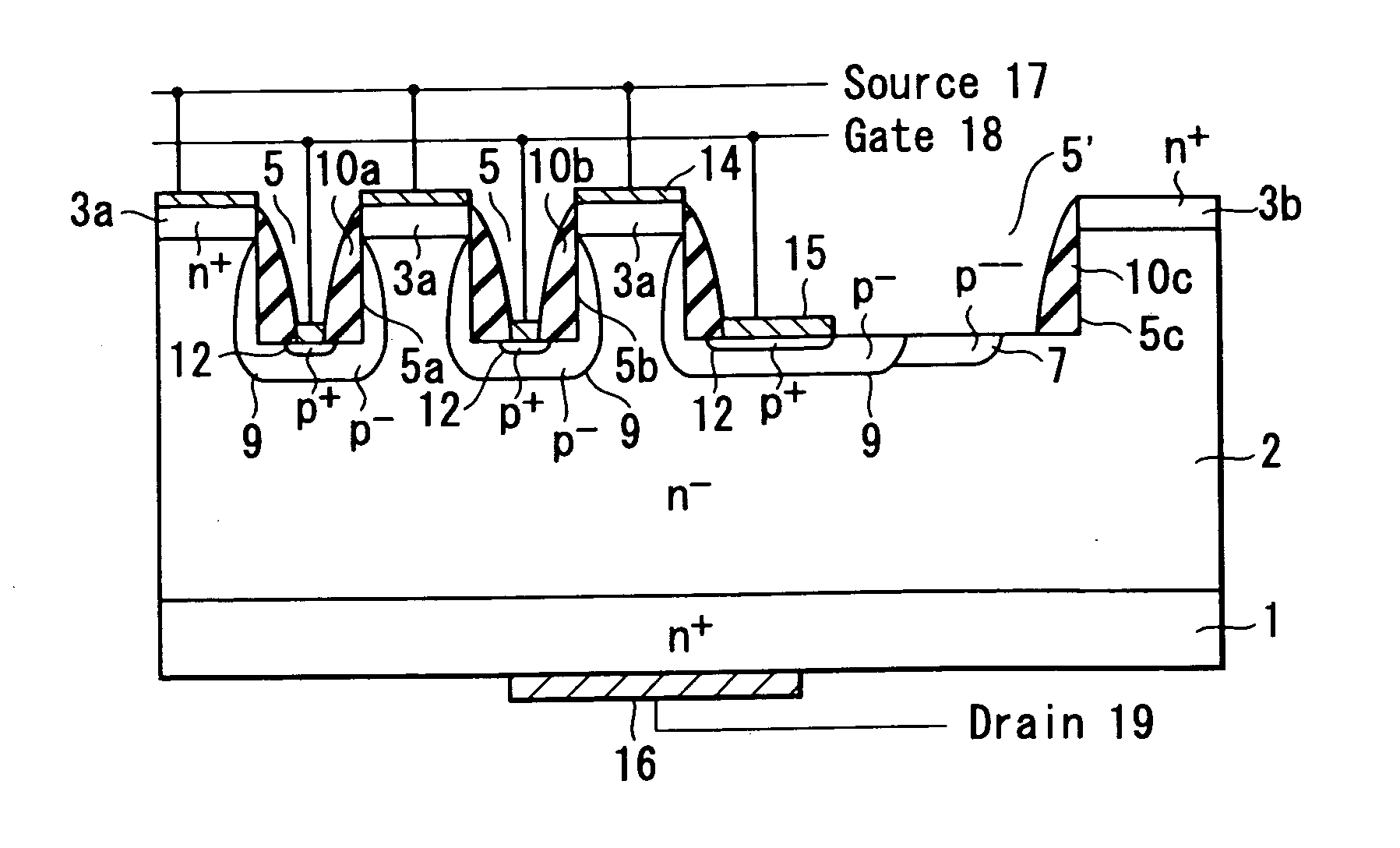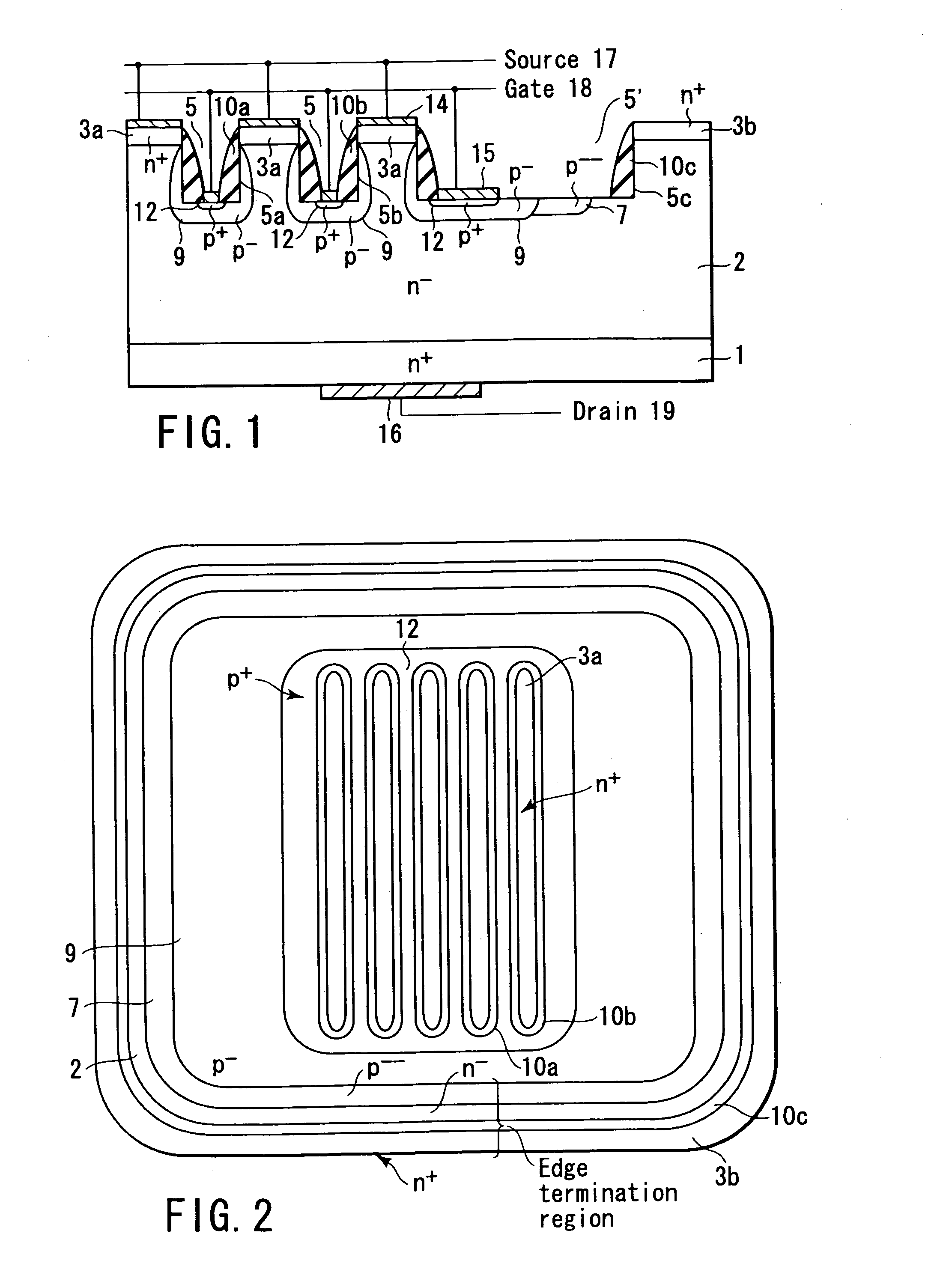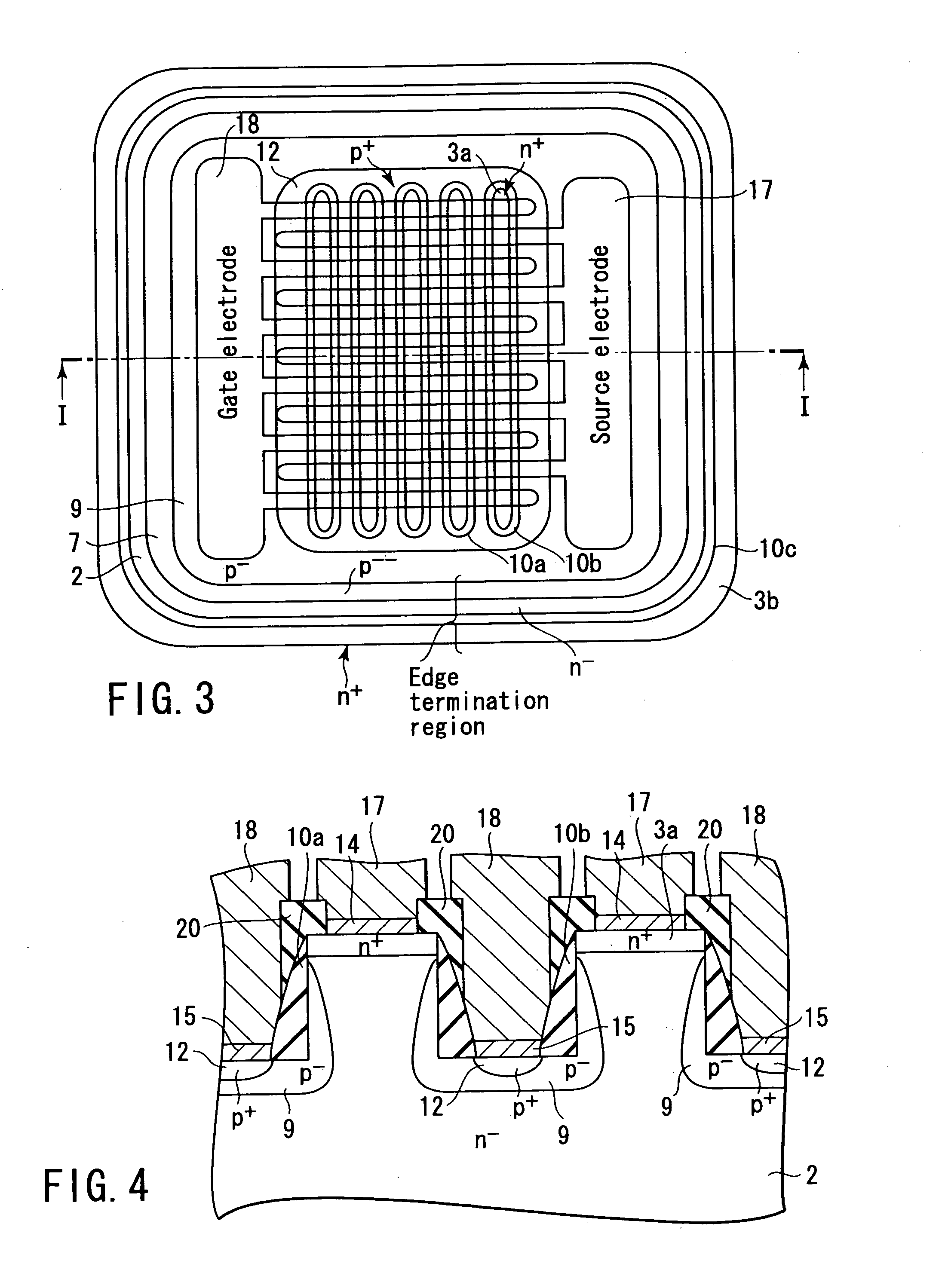High-breakdown-voltage semiconductor device
- Summary
- Abstract
- Description
- Claims
- Application Information
AI Technical Summary
Benefits of technology
Problems solved by technology
Method used
Image
Examples
first embodiment
[0060] (First Embodiment)
[0061] A first embodiment relates to a high-breakdown-voltage semiconductor device (SIT).
[0062] First, structural characteristics and effect in the SIT of the present embodiment will be described.
[0063] As shown in FIG. 1, in one surface of an n-type high-resistance semiconductor layer (SiC layer), an n-type first semiconductor region (SiC layer) 3a is selectively disposed as a source region which has a resistance lower than that of a high-resistance semiconductor layer 2 (higher impurity concentration). The impurity concentration and thickness of the high-resistance semiconductor layer 2 are determined by a designed breakdown voltage. For example, the impurity concentration is in a range of 1×1014 to 1×1016 cm−3 and the thickness is in a range of 5 to 100 μm. The source region 3a has an impurity concentration, for example, of 1×1020 cm−3. Examples of an n-type dopant for use include nitrogen, phosphor, and arsenic.
[0064] As shown in FIGS. 1 to 3, trench ...
second embodiment
[0102] (Second Embodiment)
[0103]FIG. 13 is a sectional view of the high-breakdown-voltage semiconductor device (SI thyristor) according to a second embodiment of the present invention. An n+ layer on the back surface in the first embodiment (FIG. 1) is changed to a p+ layer, and the static induction (SI) thyristor can be formed. Since the configuration is similar to that of the first embodiment, the same components are denoted with the same reference numerals, and redundant description is omitted. Moreover, a top plan view is the same as FIG. 2, and is therefore omitted.
[0104] First, the structural characteristics and effect in the SI thyristor of the present embodiment will be described. As shown in FIG. 13, on one surface (back surface) of the n-type high-resistance semiconductor layer (SiC layer) 2, a low-resistance p+-type semiconductor layer 1′ is disposed as a collector layer. Reference numeral 16′ denotes a collector electrode, and 19′ denotes a collector electrode lead wire...
third embodiment
[0109] (Third Embodiment)
[0110] The high-breakdown-voltage semiconductor device of a third embodiment relates to a junction barrier Schottky diode (JBS).
[0111] First, the structural characteristic and effect in the JBS of the present embodiment will be described. As shown in FIG. 15, on one surface of an n-type high-resistance semiconductor layer (SiC layer) 102, a Schottky electrode 114 is disposed to form Schottky junction with this high-resistance semiconductor layer 102. Reference numeral 103a denotes a Schottky junction region. The impurity concentration and thickness of the high-resistance semiconductor layer 102 are determined by the designed breakdown voltage. For example, the impurity concentration is in a range of 1×1014 to 1×1016 cm−3 and the thickness is in a range of 5 to 50 μm. Furthermore, when conduction modulation is used, the thickness may also be 100 μm. Examples of the n-type dopant for use include nitrogen, phosphor, and arsenic. Examples of the material of the...
PUM
 Login to View More
Login to View More Abstract
Description
Claims
Application Information
 Login to View More
Login to View More - R&D
- Intellectual Property
- Life Sciences
- Materials
- Tech Scout
- Unparalleled Data Quality
- Higher Quality Content
- 60% Fewer Hallucinations
Browse by: Latest US Patents, China's latest patents, Technical Efficacy Thesaurus, Application Domain, Technology Topic, Popular Technical Reports.
© 2025 PatSnap. All rights reserved.Legal|Privacy policy|Modern Slavery Act Transparency Statement|Sitemap|About US| Contact US: help@patsnap.com



